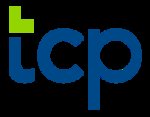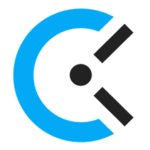Do you need new time and attendance software?
If you are still using paper timesheets or a traditional punch clock, your business will benefit from a digital time and attendance system. First off, it reduces the chances of time-related errors in your payroll. Most of these systems integrate with payroll by uploading the timesheet data into your payroll program. No one has to manually calculate time punches and reenter them into the payroll software – a process that's more likely to result in errors.
Time and attendance systems allow businesses to create electronic schedules, manage PTO, and store employees' schedules, work hours, break time, time off, overtime, and paid hours in one place. That means you'll no longer need to dig for data in paper files when an employee or your payroll provider has a question.
How can time and attendance software save you money?
You may pay $2 to $10 per employee per month for a time and attendance system, but the savings you get in return can far outweigh the cost.
Businesses can save money with a digital time and attendance system by eliminating inaccurate clock-in and clock-out times. For example, with manual timekeeping, an employee might round up their clock-out time from 4:50 to 5 p.m., or round down their lunch break from 40 minutes to 30. Time and attendance systems eliminate this type of punch rounding and ensure that employees are paid only for when they actually work.
Time and attendance software also saves you money by:
- Reducing the paid hours that managers, admins or HR staff spend on gathering and calculating timecards
- Decreasing manual data entry errors that result in time spent fixing payments
- Reducing the risk of labor-law fines and back pay, which are common when employee time isn't calculated and paid correctly
What should you expect time and attendance systems to do?
You should expect your time and attendance system to handle all your hourly and salaried employees' time-tracking needs, including overtime.
At the very least, look for a timekeeping solution that offers multiple ways to clock in and out, gives remote workers the ability to punch in and out from wherever they are, and integrates with the payroll software you use. Other useful features include the ability to generate and assign employee schedules, manage PTO tracking and approvals, log how long employees work on specific projects, and monitor where your remote employees are clocking in and out from each day.
How does an employee time clock work?
An employee time clock provides a record of when an employee works. With traditional punch clocks, an employee inserts a paper timecard into the machine, which records on the card what time the employee clocked in or out.
Digital time clocks (computers, kiosks and mobile devices) record the clock-in and clock-out times directly in the time and attendance software, using a secure method to avoid time theft. Examples are a login ID, PIN, swipe card or biometrics (such as fingerprint, photo or facial scans).
How does employee time tracking integrate with payroll and HR?
Employee time tracking is an input for payroll, especially for employees who are paid by the hour. To pay your workers properly, you need to know how many hours they work each day, week and pay period.
The best time and attendance systems integrate with your payroll and HR software, either by uploading a CSV file or automatically transferring timesheet data through a digital interface. This process saves time and cuts down on errors in transferring work hours from one program to another.
Why is it important to clock in and out at work?
The biggest benefit of employees clocking in and out is ensuring that you pay employees for all hours they work, in compliance with federal and state labor laws. Similarly, you don't want to pay employees for time they aren't working. A digital time and attendance system gives employers precise details on when employees are working and when they aren't.
Biometric time clocks, which make employees punch in and out with a fingerprint or retinal scan, also prevent buddy punching. In other words, they ensure employees clock in themselves rather than having someone else do it for them. If not curbed, buddy punching can cost your business money and reduce productivity and morale.
Accurate timekeeping also gives employers a better handle on staffing needs. With time and attendance software, you can compare employees' schedules with the busiest days and times for your business and adjust staffing levels accordingly.
How are time and attendance managed with a PEO?
As a co-employer, a professional employer organization (PEO) will require you to manage employee time and attendance according to labor laws. Therefore, they'll likely provide a time and attendance app that lives on the same platform as other HR functions, like payroll and benefits administration.
For example, when an employee records their time for the day, that data automatically populates in the software, saving you from duplicate data entry that could lead to payroll errors.
Why is it important to document employee time and attendance?
A time and attendance system can save your business money, improve team productivity, and aid in legal compliance, because the time records serve as a legal document and must be kept for a minimum of two years in most states.
An accurate log of when employees are – and aren't – working ensures that each staff member is onsite when they're supposed to be and being paid only for the hours they work. In addition, having a record of the hours that employees have worked helps employers optimize their staffing levels so they are not under- or overstaffed. This is especially important for service businesses like restaurants and retailers.
Time and attendance reports can also serve as proof that your business is following the appropriate employment and labor laws – for example, adhering to youth attendance laws, paying overtime, and tracking mandatory paid rest breaks and unpaid meal breaks.
What is a reasonable attendance policy?
Some organizations need strict attendance policies to function properly, while others may offer flexible work schedules. Most employers require workers to call in when they are going to be late or miss work. Many document each tardy occurrence, and some terminate employees who fail to show up for work after one, two or three days.
According to the U.S. Bureau of Labor Statistics, the average full-time worker misses almost three days per year. In some industries, such as service occupations, the absence rate is higher. When drafting your company's attendance policy, consider your industry and your company culture as well as the demands of the business.
For example, one employer may find it acceptable for an office worker to be 30 minutes late to their shift because their work schedule is flexible. On the other hand, a manufacturer or retailer may not tolerate such tardiness or an unauthorized absence because it may affect the business's ability to function.
Once you've created your company's attendance policy, you should meet with your employees to review the policy and ensure they understand what is expected of them.

















 Key takeaway: Cloud-hosted time and attendance systems typically cost $2 to $10 per employee per month, and on-premises systems cost $100 to $400 per license.
Key takeaway: Cloud-hosted time and attendance systems typically cost $2 to $10 per employee per month, and on-premises systems cost $100 to $400 per license. Tip: Before comparing time and attendance systems, identify which features you need. Some companies offer all these features bundled together, whereas others offer them on an a la carte basis.
Tip: Before comparing time and attendance systems, identify which features you need. Some companies offer all these features bundled together, whereas others offer them on an a la carte basis. Did you know? It can take up to six or seven minutes to add up each employee's timecard.
Did you know? It can take up to six or seven minutes to add up each employee's timecard.